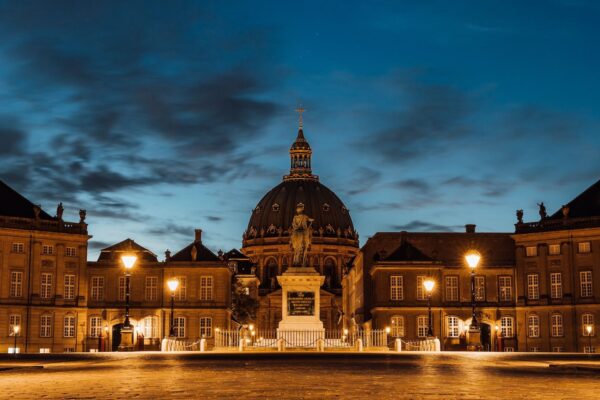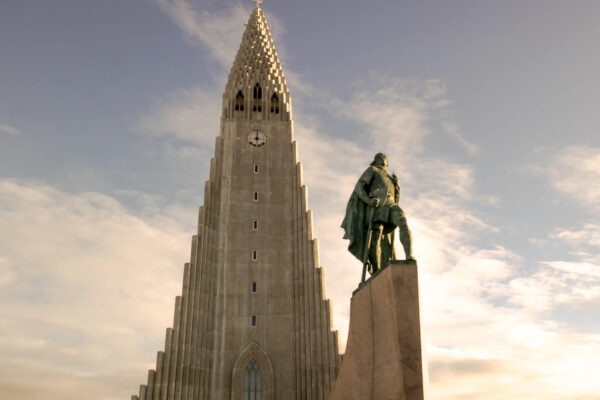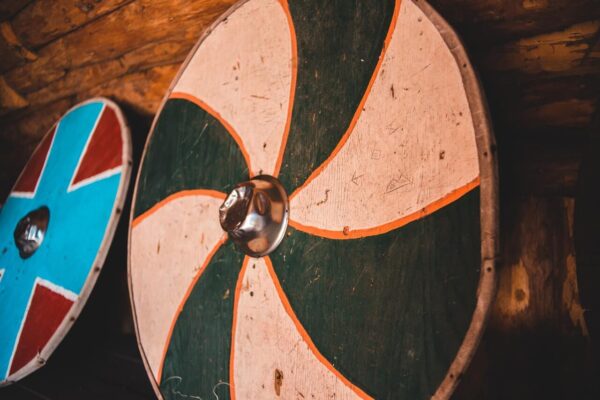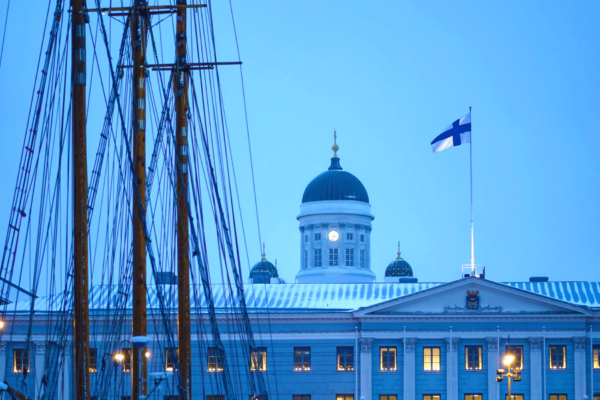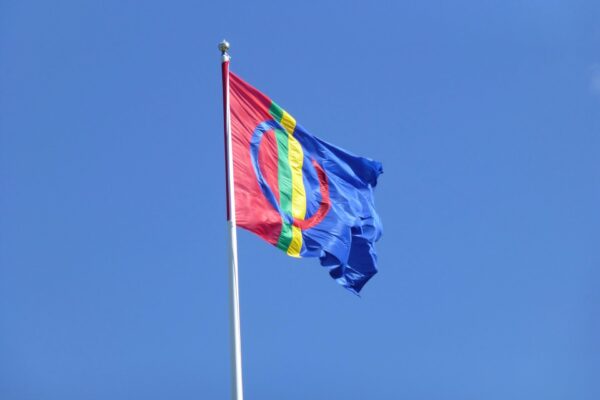Do you think of Sweden’s history primarily in terms of the Vikings? Here you will find an informative timeline summarising all the important events. From the first colonisation of the country to the present day – immerse yourself in the exciting history of Sweden or get a quick overview.
The history of Sweden is varied and shows that the modern and progressive Scandinavian country as we know it today had its roots right after the last ice age. It was some time before the world-famous Vikings set off on their infamous voyages. Finds on Swedish soil can be traced back to the 8th century AD, when village communities gradually emerged.
The following Middle Ages were characterised by polarities: between Roman Catholicism and Reformation Lutheranism, between absolutism and the rule of the estates. Territorial claims and unions, such as the Kalmar Union with Denmark and Norway or the later personal union, were unstable, as were Sweden’s national borders. In the 16th century, Sweden was even regarded as a great power, gradually conquering territories along the Baltic coast – incidentally, Finland was also part of the Swedish empire at the time, which is why Finland’s history is closely linked to Sweden to some extent.
With the introduction of universal suffrage in the 19th century, Sweden gradually became politically what it is today: a liberal welfare state and a parliamentary-democratic monarchy. In our timeline, you can read in more detail how this came about and which historical events influenced the Scandinavian country and continue to shape it to this day.
From around 12,000 BC: from the Ice Age to the Stone Age
“Hunter Stone Age”: Sweden’s first colonisation

Towards the end of the last ice age, people migrated to Sweden for the first time and colonised the country. They came from Central Europe via a land bridge from Denmark to southern Sweden. The oldest artefacts come from what is now the Swedish region of Skåne.
Around 5000 BC, this land connection was flooded by the sea and disappeared. At this time, however, some parts of the country were already populated. It is also assumed that settlers from north-east Europe had already migrated into the interior and the far north a few thousand years earlier. At that time, people lived nomadically as hunters, gatherers and fishermen and had not yet settled in a permanent place of residence.
“Stone Age”: from nomadism to permanent settlements

From around 4000 BC, vegetation developed again after the long Ice Age, making it possible for people to farm and raise livestock. They built their first settlements and became sedentary.
This also led to the development of various local cultures, which can be recognised archaeologically by the different types of burial sites. For example, stone passage graves have been discovered that can be traced back to the so-called Neolithic “funnel beaker culture”. The Stone Age began around 1500 BC.
1800-500 BC: Bronze Age
Further immigration
From around 2000 BC, Indo-Europeans migrated and brought with them, among other things, the material bronze, which was used to make tools, weapons and jewellery. However, bronze was already considered a luxury product at this time. In addition, the local Northmen undertook large sea voyages for the first time, which brought them into contact with the rest of Europe.
At the end of the Bronze Age, so-called “boat people” or “battle axe people” migrated to what is now Sweden.
79-550: Antiquity and early Iron Age
79 AD: first mention of Scandinavia
The first mention of the Scandinavian peninsula, called Scatinavia, as well as descriptions of local peoples and their kings were found in Latin writings from the years 79 and 98. Archaeological finds and records allow several sub-tribes to be distinguished, which were later united to form an empire.
150 AD: First cartographic mapping of Scandinavia
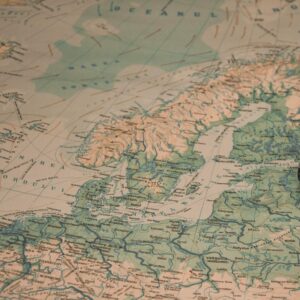
Scandinavia was first mapped on Ptolemy’s world map around the year 150. Magnificently decorated chamber tombs also point to the slow development of different social classes. The runic script also emerged towards the end of antiquity.
Trade with the Roman Empire
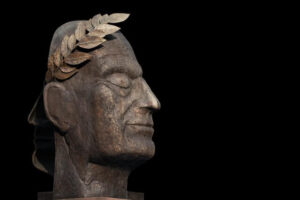
From the birth of Christ until around the fifth century, there is evidence of extensive trade between the Swedish population of the time and the Roman Empire. Roman coins, for example, have been discovered. The Romans traded their products for furs and horses from Sweden.
The Nordic runic script can also be traced back to Roman and Greek characters. Some writings from this period refer to the first ancestors of the Sami people, who still live in parts of Sweden today.
400-550: Germanic migration
Remains of prehistoric castles and gold finds in present-day Sweden point to the Germanic migration of peoples. These castles were used as refuges. Travellers could stay here to protect themselves from armed gangs roaming the country.
550-800: Vendel period
The reign of the Svear
The name “Vendel period” goes back to the Vendel region in central Sweden, after which the style of the period was named. Numerous artefacts have been found here that point to castles and settlements. Vendel was regarded as the centre of power of the Svear tribe. This also gave Sweden its current name Sverige. The name of the Svealand region can also be derived from this.
Numerous settlements and trade with the entire Baltic Sea region developed under the Svearn.
800-1050: Viking Age
Raiding and trading trains
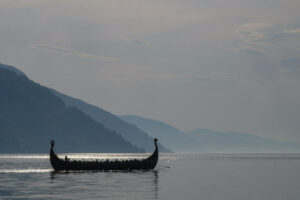
The Viking Age was characterised by the so-called Viking raids. These were raiding and trading expeditions by ship, during which other countries were plundered. Vikings were former farmers who decided to give up farming and take part in such raids instead.
The Vikings who lived on Swedish soil at the time were called Varangians. Most of their routes led eastwards.
Emergence of village communities

While the Northmen had previously lived on individual farms, the Viking Age saw the gradual establishment of permanent village communities. They were under the political leadership of the village elder or Ältermans.
The villages belonged to one of the two large dominions in Sweden: that of the Svear or that of the Götar. These were separated from each other by forest areas.
830 AD: First missionary attempts

The Benedictine monk Ansgar came to his kingdom at the request of the Svear king in order to familiarise the local population with the Christian faith and spread it. The monk founded the first Christian church in the whole of Scandinavia in Birka, the Svear’s most important trading centre. However, the Svear rebelled against the missionary work and destroyed the church shortly afterwards.
1008 AD: Foundation of the Svear Empire
The unification of the two dominions of the Svear and the Götar created the great Svea Rike, the “Kingdom of the Svear”. The king of the new kingdom was Olov Skötkonnung. He was also the first Christian king.
1050-1389: High Middle Ages
Christianisation and the beginnings of the monarchy

It was not until the 11th century that the slow success of the Christian missions from England and Sweden’s neighbouring regions to the south became apparent. The first wooden village churches were built and, a little later, bishop’s residences. Towards the end of the 12th century, Swedish crusades followed eastwards into what is now Finland.
In 1164, the Kingdom of Sweden received its first archbishop. Christianisation and the church are regarded as the foundations on which the Swedish monarchy was built.
1250-1364: The Folkung dynasty
In the 13th century, the Folkung dynasty prevailed. They received support from the church and established the first political institutions, such as councils and offices, which took over central functions.
From the 13th century, taxes were introduced for the peasants in order to finance the military apparatus of the monarchy. New laws enacted by the king contributed to the further stabilisation of the monarchy. In 1323, what was then Finland was incorporated into the Swedish Empire, which until then had no political organisation.
1397-1523: Kalmar Union
1397: Negotiations in Kalmar
As a result of a war against the then Swedish King Albrecht of Mecklenburg in 1389, Margaret I, who already ruled over Denmark and Norway by inheritance from her husband and son, also became ruler of Sweden. With the aim of fully uniting all three Nordic monarchies, Margaret I summoned representatives from Sweden, Denmark and Norway to Kalmar in 1397.
The result of the negotiations was a letter of union in which a common foreign policy for Denmark, Norway and Sweden was laid down. The Middle Norse language was spoken in all three kingdoms, which made unification easier.
Sweden in the Union
Erik of Pomerania, a relative of Margaret I, initially became King of the Union. Shortly after Margaret’s death in 1412, the Union was already embroiled in numerous conflicts, not least from within. As Danish centralism slowly became established, the Norwegian and Swedish nobility felt pushed back. There were repeated uprisings against the king.
In Sweden, new regents, so-called “imperial administrators”, repeatedly asserted themselves against the Union kings. These regents opposed the Union and Danish supremacy. The aim was to regain Sweden’s independence.
1520-1523: End of the Kalmar Union
Sten Sture was one of Sweden’s imperial administrators and successfully went to war against the Danish-Norwegian King Christian II in 1520. The result was the “Stockholm bloodbath”: in revenge, the king had many of the nobles and clerical opponents who had supported Sture murdered.
This was followed by an all-Swedish popular uprising, which brought a new ruler to power: Gustav Eriksson Vasa. With his rise and election as the new king, Sweden left the Kalmar Union. However, the Danish-Norwegian Union remained in place.
1523-1617: The Vasa period
1523: Gustav Vasa becomes king
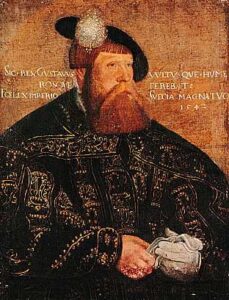
The Kalmar Union ended with the rise of Gustav Vasa. He took Stockholm and thus gained Sweden’s independence. He was elected king on 6 June 1523 and is thus considered the founder of the Vasa dynasty. The Swedes celebrate their bank holidays on this day to this day.
Reformation and church politics

In 1527, the new Swedish king ensured that the Church of Sweden separated from Rome and partially secularised itself. However, there were no reformist interests behind this action. Rather, Gustav I wanted to utilise the wealth of the church to finance the monarchy and pay off state debts.
By translating the Bible and Luther’s catechisms into Swedish, the Reformation also became theologically established in the country. In 1593, the Synod of Uppsala, a council of the Swedish church, declared Lutheranism to be the only religion authorised in Sweden.
Fratricidal fights
Because Gustav I had changed the king’s right to vote into a right of succession, his sons ruled after his death. The elder son Erik XIV became Sweden’s new king, while his younger brother Johan became Duke of Finland. The two repeatedly clashed over the sovereignty of the Duchy of Finland. In 1568, Johan was able to overthrow Erik XIV from the throne with the help of his third brother Charles and had him arrested. Erik died in prison.
Johan was appointed King of Sweden a year later and after his death, his son Sigismund became king.
1617-1721: Sweden as a great power
1618-1648: The Thirty Years’ War
In the following years, Sweden pursued a policy of conquest: from 1617 to 1629, Sweden conquered many areas along the southern Baltic coast and entered the Thirty Years’ War from 1630. This meant that areas in the western Baltic Sea region were also to be conquered. This included large parts of Denmark and later, as part of the Peace of Westphalia (1648), areas of present-day Germany.
Military state and absolutism
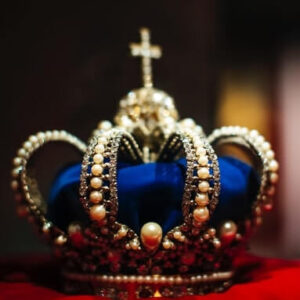
On the one hand, Sweden’s time as a great power was characterised by its military organisation and structures: It had the most modern and largest navy in the entire Baltic region. It was able to sail to fortresses that marked the borders of Sweden’s empire. The entire country was surrounded by a belt of fortifications. Sweden’s standing army was also well equipped.
At the same time, absolutist endeavours on the part of the kings intensified from around 1620. The administration and justice of the country were to be controlled as centrally as possible by the ruling king, thus disempowering the estates. The king alone also decided on legislation from 1682 onwards.
The rest of the 18th century
The end of the Great Northern War (1700-1721) and the “liberty period” (1718-1772)
The Great Northern War between Sweden, Denmark, Saxony, Poland-Lithuania, Russia, Brandenburg and other states led to the end of Sweden’s time as a great power and the end of Swedish absolutism. The estates regained their political power.
Queen Ulrika Eleonora was pressurised by the opposition from the estates to relinquish her essential powers of government and establish an Imperial Council consisting of the three estates of nobility, clergy and bourgeoisie. Even the peasants were represented here, which was unique in Europe at the time. The Imperial Council also took over Sweden’s legislation. This marked the beginning of the so-called “Age of Liberty”.
1772-1792: Gustavian era and neo-absolutism
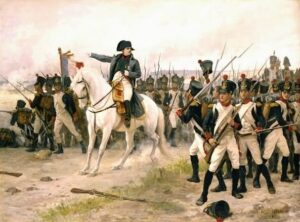
Under Ulrika Eleonora’s son Gustav III, a coup d’état took place and absolutism was reintroduced. Although the new form of government effectively consisted of the king and the Imperial Council, the latter was appointed by the king and had to cede most of its powers back to him. Gustav III’s authoritarian rule even led to restrictions on the freedom of the press. In 1772, the country was hit by famine and popular discontent became so great that the king was assassinated and died.
His son Gustav IV Adolf then took the throne and had Sweden go to war against Napoleon. In the course of these coalition wars, Sweden lost its rule over Finland to Russia. Gustav IV Adolf was overthrown and neo-absolutism came to an end.
The 19th century
1809: New fundamental laws

After the deposition of Gustav IV Adolf, four basic laws modelled on the French model were drawn up to secure Sweden’s new form of government. As renewed neo-absolutist rule by the king was to be avoided, a balance was sought between the power of the king and the estates. To this end, the king and the Diet were to co-operate politically, while the Imperial Council took on an advisory role.
Gustav IV Adolf’s uncle, Duke Karl, became the new Swedish king.
1814: Norway in union with Sweden
As a result of the Swedish-Danish War (1813-1814), the Peace of Kiel in 1814 stipulated that Denmark had to cede Norway to Sweden: the Union of Sweden and Norway came into being. In fact, this was a personal union within which Norway continued to be treated as a separate kingdom with its own laws and administration. Only the royal house and foreign policy were shared by Sweden and Norway.
One year later, however, Sweden had to cede Finland to Russia as a result of the Congress of Vienna. Despite ongoing conflicts within the Swedish-Norwegian union, it was able to survive until 1905. The war with Denmark was also the last in which Sweden entered.
1815-1840: The Karl Johan period

The Estates, especially the nobility, exerted massive pressure on the new King Karl XIII and arranged for a successor to the throne of their choice. After the king’s son had died, they offered the position of crown prince to the Frenchman Jean-Baptiste Bernadotte, brother-in-law of Napoleon’s brother and marshal. Bernadotte was to be adopted by the reigning King Karl XIII under the name Karl Johan. Although the king was still in office, Bernadotte took over the reins of government as crown prince in the same year. He thus became ruler of Sweden-Norway.
Jean-Baptiste or Karl Johan is regarded as the founder of the Bernadotte dynasty, from which the current Swedish royal family is also descended.
Economic developments: Emigration, industrialisation and urbanisation

While many Swedes emigrated from around 1821 due to the poor labour market (many of them to the USA), the country was slowly able to modernise under the rule of Karl Johan, particularly in the years that followed from 1850. In addition to new communication and transport routes via telegraph and railway networks, industrial companies emerged that exported iron and wood, among other things. As a result, Sweden slowly developed from a country characterised by agriculture into an industrial state.
People moved from the countryside to the city and the country’s population grew at the same time. Against this backdrop, urbanisation of the cities began, particularly in Stockholm, Malmö and Gothenburg.
The 20th and 21st centuries
1905-1939: The beginning of democracy and the First World War
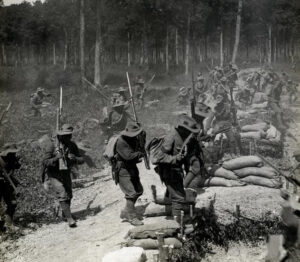
After Norway declared the dissolution of the Union in 1905 following various disagreements with Sweden, a peaceful agreement was reached in the same year through the Treaty of Karlstad.
Sweden then turned its attention back to domestic politics. The labour movement was able to establish itself as a political party alongside the Conservatives and Liberals. Among other things, it also ensured that Sweden adopted a neutral position in the First World War (1914-1918) and drew up a declaration of neutrality together with Norway in 1914.
Universal suffrage for men was introduced in 1907 and Sweden’s first democratically elected government was formed after the parliamentary elections in 1911. In 1921, women were granted the right to vote.
1939-1945: Sweden in the Second World War

Sweden also declared its neutrality during the Second World War, but got into difficulties due to its political sympathies with Finland. With “Operation Barbarossa” in 1941, Germany invaded Finland, which then entered the war against the Soviet Union. Sweden provided support by transporting soldiers and weapons to the Finnish-Soviet front.
Despite economic agreements with Germany, the Swedish economy suffered during the war. Numerous war refugees, including many persecuted people from Germany, came to Sweden. Sweden also carried out a number of humanitarian missions abroad during the war. Overall, Swedish national consciousness grew during this time.
1945-1990: The first welfare state
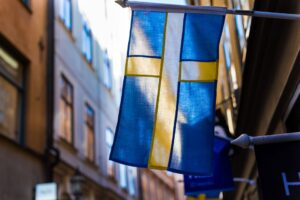
Sweden joined the UN in 1946. The so-called “Swedish model” or the “third way” of the welfare state between capitalism and socialism brought positive reforms: universal health insurance, universal child benefit, nine years of compulsory schooling and an extension of the statutory holiday period were introduced. The Swedish economy also began to improve. In the so-called “record years” from 1960 to 1976, the Swedes even had one of the highest standards of living in the world.
In 1969, Olof Palme took up his first term as Swedish Prime Minister, who is still known today for his committed foreign policy, disarmament initiatives and family policy reforms.
At the end of the 1970s, Sweden ran into economic difficulties due to several crises with its concept of the welfare state. The social system increasingly suffered as a result. For this reason, relations with other European countries were to be expanded and Sweden applied for membership of the European Union (EU) in 1990.
From 1990: The second welfare state

Despite initial scepticism, Sweden became a member of the EU in 1995 following a referendum, but decided against the planned monetary union as early as 1997. The majority of the Swedish population also rejected the introduction of the euro in a referendum in 2003.
Sweden remains a parliamentary-democratic monarchy to this day, which means that there is still a king or queen, although they mainly fulfil representative functions.
Together with its neighbour Finland, however, Sweden has remained neutral in global politics, with both countries refusing to join NATO for a long time. This changed in spring 2022 with the Russian invasion of Ukraine. For the first time, a majority of the Swedish population was in favour of joining the Western defence alliance. In June 2022, the two countries submitted a joint official application to join NATO. Sweden became the 32nd member of NATO on 7 March 2024.
Source:
Tuchtenhagen, Ralph (2008): Kleine Geschichte Schwedens. München: Verlag C.H. Beck.
